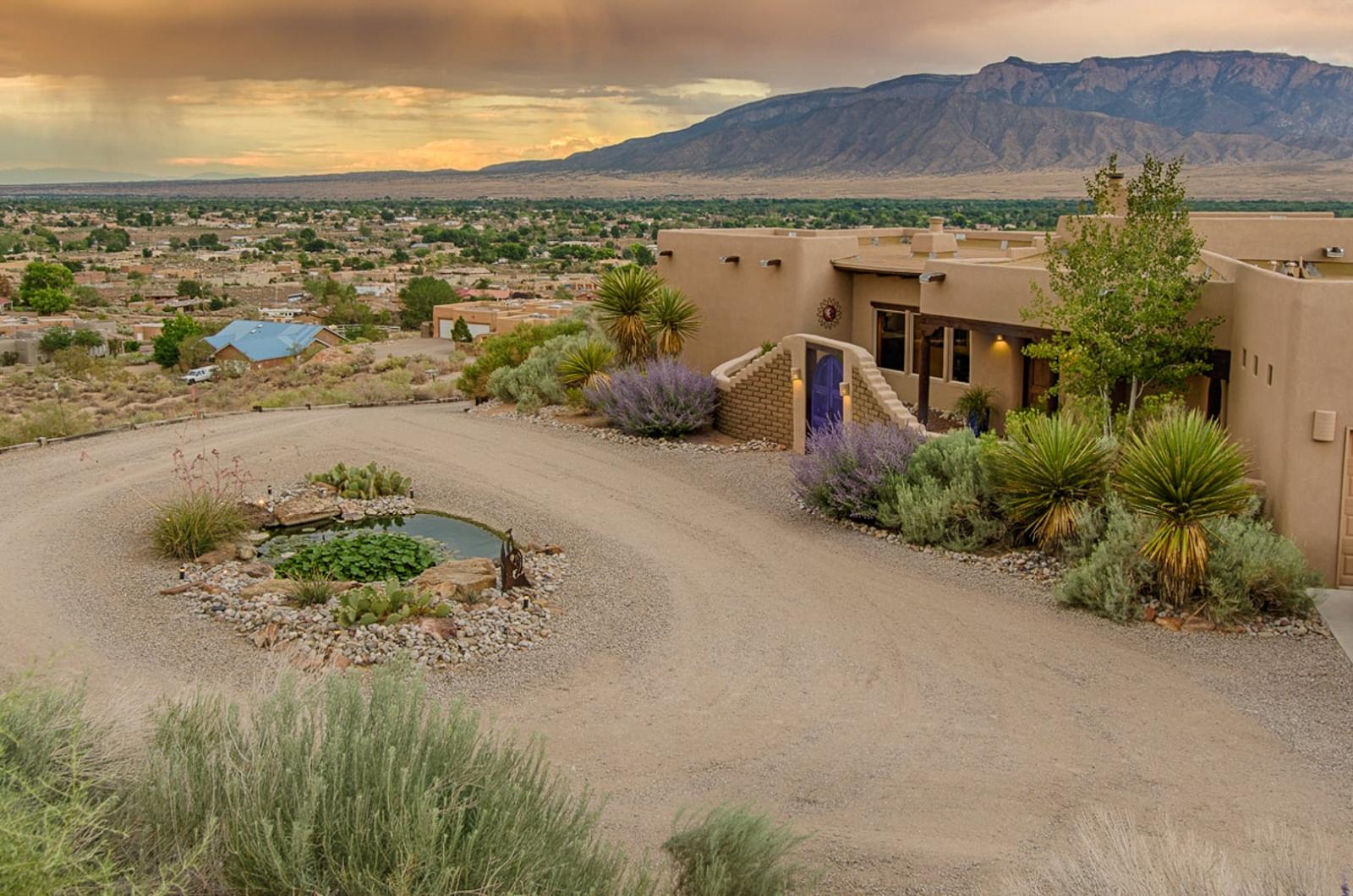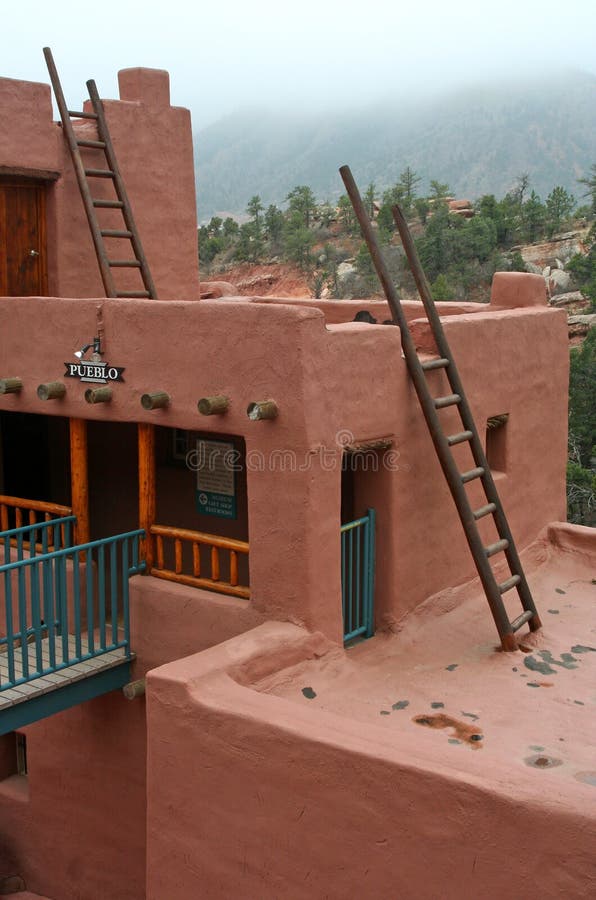Table Of Content

In the early 21st century, modern construction materials were sometimes used in tandem with adobe, creating stronger and more durable structures. Contemporary Pueblo peoples continue to use syncretic strategies; they have adopted a variety of modern convenience products, yet they extensively retain their traditional kinship systems, religions, and crafts. Kinship is typically reckoned through the lineage, a group that shares a common ancestor; several lineages together form a clan. Early 20th-century kinship studies indicated that some pueblos may have had more than 30 clans at one time, which were often grouped into two larger units, or moieties.
Related Articles
Philippe Garnier and his brothers, Eugene, Abel, and Camille, owned the 4,400 acre Rancho Los Encinos in the San Fernando Valley where they raised sheep. Despite losing a considerable sum of money in the wool market crash in 1872, the Garniers were financially well off and remained influential in local commerce. Philippe Garnier served as a bank director on the Board of the Farmers and Merchants Bank from 1879 to 1891 and is believed to have constructed several other buildings in Los Angeles. The Merced Theatre was built in 1870 and is one of the oldest structures erected in Los Angeles for the presentation of dramatic performances.

Plaza Firehouse
If you live in Pueblo, there's a good chance you've passed an important piece of history on your daily commute without even realizing it. Through feast days, she celebrated her culture with dancing, food, storytelling, and prayers - where she gained a deep appreciation for the Pueblo way of life and the values that became intrinsic to the way she approaches her job. In the past 500 years, Native Americans have faced genocide, dislocation, and various forms of physical, mental, and social abuse. These factors have led to high rates of violence, assault, and abuse among the Native American people today. Pueblo Native Americans are one of the oldest cultures in the United States, originating approximately 7,000 years ago. To learn about other types of ancient dwellings, please see the Mesa Top Sites page.
The Earthy, Functional Home Style With Indigenous Pueblo Origins
The cliff dwellings of Mesa Verde are some of the most notable and best preserved in North America. Sometime during the late 1190s, after primarily living on the mesa tops for 600 years, many Ancestral Pueblo people began moving into pueblos they built into natural cliff alcoves. The structures ranged in size from one-room granaries to villages of more than 150 rooms. While still farming the mesa tops, they lived in cliff dwellings, repairing, remodeling, and constructing new rooms for nearly a century. In the mid-1200s, the population began migrating to the south, into present-day New Mexico and Arizona. The 2.2-acre LA Plaza de Cultura Y Artes campus includes two historic and newly renovated buildings (the Vickrey-Brunswig Building and Plaza House) that are surrounded by 30,000 square feet of public gardens.
The Hopi, Zuni and Acoma tribes are all groups of Pueblo peoples, named so for the villages they built -- "pueblo" in Spanish is a word meaning both village and the people living in it. While adobe-style homes tend to use adobe brick materials—earth, water, and grass or straw—Pueblo Revival homes appropriate the original construction style. "The more modern houses are actually timber-frame structures finished on the outside with stucco to make them look like adobe," says Jojola. Typically, Pueblo Revival homes have a heavier look than the original earthen style. Given their unique history and functionality, adobe-style homes have the same key characteristics. According to Jojola, adobe is a type of earthen material containing earth mixed with water and either grass or straw.

Hammel Building
In the 1930s, after the Mexican marketplace had opened on Olvera Street, Christine Sterling persuaded Forman Brown and his partners to open their “Yale Puppeteers” in the building. She also invited photographers Viroque Baker and Ernest Pratt to set up their studios on the second floor. In the 1940s during World War II, a USO canteen was located in the building, providing a refuge to the thousands of troops passing through Union Station. Today, the Avila Adobe is open to the public as a museum and is furnished as it might have appeared in the late 1840s. It attracts over 300,000 visitors annually and is a wonderfully tranquil space in the heart of the big city. The district was first listed in the National Register of Historic Places on November 3, 1972.
Colorado legislator joins pro-Palestinian protesters in House gallery, Biden plans visit to Pueblo WHAT YOU NEED ... - coloradopolitics.com
Colorado legislator joins pro-Palestinian protesters in House gallery, Biden plans visit to Pueblo WHAT YOU NEED ....
Posted: Tue, 21 Nov 2023 08:00:00 GMT [source]
In the hotel’s heyday the courtyard featured a fountain and an aviary of exotic birds. The back of the hotel faces Sanchez Street, where the large gate used by supply wagons and other large vehicles can still be seen. The rear of the landmark Pico House is frequently seen in the CBS TV series, The Mentalist as the headquarters of the fictional California Bureau of Investigation. The Pico House is listed as a California Historical Landmark (No. 159) and a National Historic Landmark as a part of the Los Angeles Plaza Historic District. PASSION – Pueblo is proud of our authentic and hard-working people who are passionate about their lives, families and community. Historically, it leaned Democratic, particularly because of its strong union presence related to the steel industry.
What are indoor radon levels like in Pueblo County, Colorado? - Pueblo Chieftain
What are indoor radon levels like in Pueblo County, Colorado?.
Posted: Tue, 06 Feb 2024 08:00:00 GMT [source]
Historic home near Mineral Palace was scene of murder mystery
The Italian presence at El Pueblo begins in 1823, when Giovanni Leandri opened a store and built an adobe where the Plaza Firehouse now stands. In the 19th century, significant numbers of Italians lived at El Pueblo and owned or operated one-third of businesses in the Plaza area. Mrs. L.M Bigelow and Griffin Johnston claimed that the site belonged to them, and in early 1891, the Supreme Court decided in their favor. The lease with Mrs. Bigelow expired in 1897 and the City decided to build all future stations only on municipally-owned land, thus ending the Plaza Firehouse's life as a fire station.
National Register of Historic Places
The walls of the Avila house are made of adobe brick, a material consisting of clay, water and other organic materials like straw. Materials used in the construction of Pueblo architectural forms include clay, sand and silt, grasses and reeds, water, stone, and timber. Although building materials are often locally sourced, some materials travel great distances. The exterior was stuccoed with sand, lime and oyster dust shells, then it was painted blue, green, or pink. Made without foundations, the walls were built from slots that were 25 centimeters deep. Traditional pueblo construction used limestone blocks or large adobe bricks; the latter were made from clay and water and generally measured approximately 8 by 16 inches (20 by 40 cm), with a thickness of 4 to 6 inches (10 to 15 cm).
Although the Main Street facade has not changed significantly, the Olvera Street facade has been altered and repaired over the years. The theatre was built by William Abbot, the son of Swiss immigrants who settled in Los Angeles in 1854. In 1858, he married the woman for whom he would name the theatre, Maria Merced Garcia, the daughter of José Antonio Garcia and María Guadalupe Uribe, who were long-time residents of the Los Angeles pueblo.
For a period of time, pueblos throughout the Southwest were connected by a network of roads that radiated from Chaco Canyon, which is believed to have been a cultural epicenter. Remnants of this roadway system are evident throughout New Mexico and Arizona today. Hundreds of Ancestral Puebloan dwellings are found across the American Southwest. With almost all constructed well before 1492 CE, these Puebloan towns and villages are located throughout the geography of the Southwest.
The building design was based on an American concept of a business block, while the breezeway and arrangement of rooms at the rear reflect the Mexican tradition of an inner courtyard. The Kitchen Exhibit recreates the boarding house’s kitchen of the 1890s, while Senora Sepulveda’s Bedroom depicts some of the cultural and technological advances at the turn of the 20th century. The Avila Adobe is LA’s oldest house still standing in its original location, and is designated as California Historic Landmark #145. Originally built in 1818 by Francisco José Avila, it has since been the home to many of his family members and descendants. Today, the Avila Adobe’s interior depicts the California lifestyle of the 1840s. Dark wood tables, four-poster beds, candelabras and elaborate carpets create a 19th-century atmosphere.
Pueblos were constructed by placing stones or bricks of adobe directly onto wood frames. Adobe also functioned as plaster to coat the walls, which helped keep the bricks securely in place and gave the walls a smooth look. According to Jojola, the history of these houses dates back to the Indigenous Pueblo, one of the many Indigenous nations from the Southwestern United States. The first adobe-style houses were circular homes called pit houses that were half in the earth and half above. Around 800 AD, Jojola says circular adobe-style homes evolved into rectangular buildings. At that time, people began to break the homes into separate rooms, using different soil types for different parts of the house.
The resources include buildings and sites from the city's Spanish, Mexican, and early American periods - from adobe buildings and large Victorian commercial blocks, to Spanish Revival buildings of the early 20th century. In summary, the Pueblo, CO metro area is a place with a rich history, set in a beautiful natural landscape, offering a relaxed lifestyle with a low cost of living. Its community is strong, with an appreciation for the outdoors, arts, and culture. For those moving to Pueblo, it's a chance to be part of a city that values its past while looking towards the future. Family and clan lineages often develop special “recipes” for paint, plaster, adobe, and other components, and individuals may travel great distances to collect the necessary materials. A particular material may be important because of its association with an origin or migration story.
However, recent trends have shown a more conservative shift among some voters. The area is politically active, with residents participating in local and state elections. Located in southern Colorado, Pueblo sits in a valley along the Arkansas River, surrounded by rolling hills with the Rocky Mountains not too far off.
Following Christopher Columbus' voyage to the New World, Spain embarked on claiming various North American territories. In the 15th century, Spanish colonization's detrimental effects befell the peaceful Pueblo tribes — resulting in censorship of Pueblo culture and religious practices. Pueblo refers to the settlements and to the Native American tribes of the Pueblo peoples in the Southwestern United States, currently in New Mexico, Arizona, and Texas. The permanent communities, including some of the oldest continually occupied settlements in the United States, are called pueblos (lowercased).


No comments:
Post a Comment